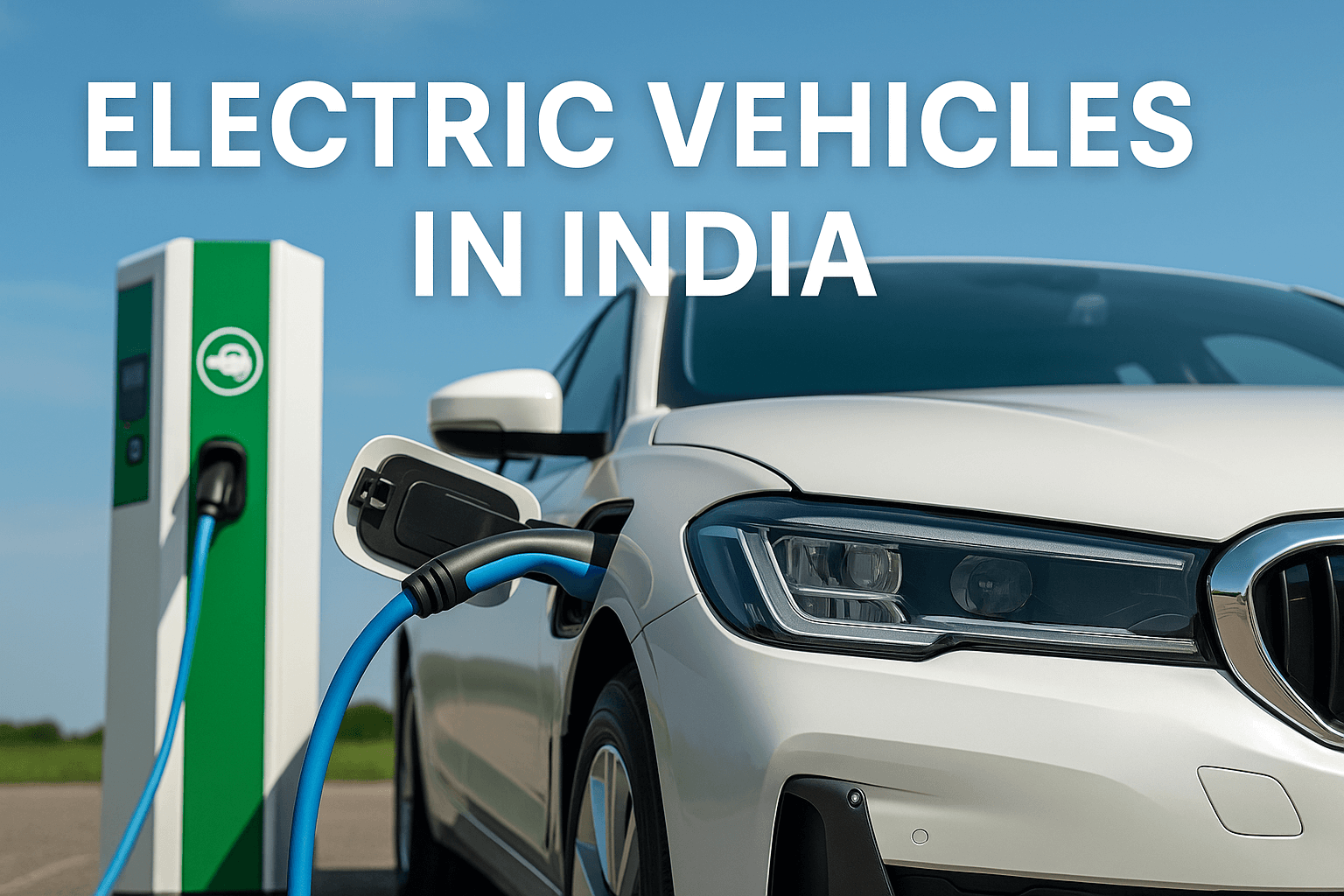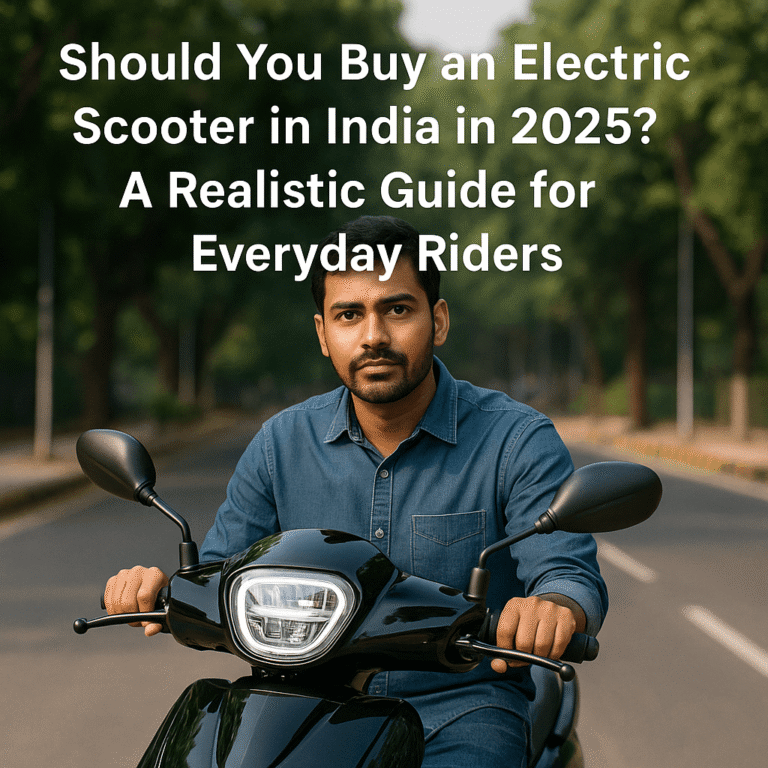Electric Vehicles in India: The Complete 2025 Guide for Every Buyer
You’ve probably noticed it by now. EVs are everywhere – on the streets, in ads, even on your Instagram feed. India’s electric vehicle wave is real, and it’s growing fast.
But with so many brands, models, and new tech terms flying around – it’s easy to feel a little lost. Should you buy one now? Are they really cheaper to run? What about charging?
Let’s unpack everything you need to know about electric vehicles in India – so you can make a smart (and confident) decision.
The Rise of Electric Vehicles in India
A few years ago, spotting an EV on Indian roads felt rare. Today, it’s hard not to see one.
According to EV Reporter, India sold over 2 million electric vehicles in FY 2024-25, with two-wheelers leading the charge. That’s massive growth and it’s only the beginning.
Here’s what’s driving the shift:
- Rising petrol and diesel prices (ouch).
- Government incentives and tax breaks.
- Growing awareness about air pollution.
- Better range and battery technology.
And honestly, there’s also a cool factor now. EVs just feel like the future.
The Indian EV Market at a Glance (2025)
India’s EV story is unique – it’s not just about fancy electric cars. It’s a layered market.
Here’s the quick breakdown:
- Electric Two-Wheelers: ~59% of EV sales. Daily commuters and delivery riders love them.
- Electric Three-Wheelers: ~36%. E-rickshaws and cargo loaders dominate tier-2 and tier-3 cities.
- Electric Cars (Four-Wheelers): ~5%. Growing quickly, especially in cities like Delhi, Pune, Bengaluru, and Hyderabad.
- Electric Buses: Small share, but crucial for public transport and government fleets.
The EV industry in India is projected to reach $110 billion by 2029, growing at nearly 20% annually. That’s huge.
Why Indians Are Finally Saying Yes to EVs
Let’s be real – Indians are practical buyers. We want value, reliability, and ease of use.
Here’s why EVs are starting to win hearts:
1. They’re Cheaper to Run
Electricity costs less than petrol or diesel – often 80% lower per kilometer.
If you ride a scooter daily, that’s thousands of rupees saved every month.
2. Government is on Your Side
Schemes like FAME II (Faster Adoption and Manufacturing of Hybrid and Electric Vehicles) offer direct subsidies on EVs.
Many states – like Delhi, Maharashtra, and Tamil Nadu – even waive road tax and registration fees.
3. Low Maintenance = Peace of Mind
No oil changes. No exhaust systems. Fewer moving parts.
You just charge and ride.
4. Cleaner, Greener Future
Every EV you drive cuts tailpipe emissions to zero. With India’s air quality issues, that’s no small thing.
Let’s talk about what’s actually on the road and worth your attention in 2025.
🔋 Electric Cars
- Tata Nexon EV / Curvv EV / Harrier EV – Tata Motors leads the pack. Reliable, accessible, and backed by a strong service network.
- MG ZS EV – Great design, long range, and premium feel.
- Mahindra BE 6 / XEV 9e – Stylish new SUVs entering the scene.
- BYD Atto 3 – Known for luxury interiors and global EV tech.
- VinFast VF7 – The newest international entrant with bold designs.
⚡ Electric Scooters
- Ola S1 Pro – Sleek design, big network of fast chargers.
- Ather 450X – Smart, sporty, and reliable.
- TVS iQube – Great balance of comfort and range.
- Bajaj Chetak – Nostalgic brand with modern appeal.
🚙 Electric Three-Wheelers
If you’ve noticed silent autos on Indian streets — that’s the EV effect.
Top brands include Mahindra Last Mile Mobility, Bajaj, and YC Electric.
What About Charging?
Ah, the big question. “Where do I charge it?”
Home Charging
Most EV owners in India charge at home overnight using a standard wall charger. Easy, convenient, and cheap.
Public Charging
India now has over 12,000 public charging stations, and the number is climbing fast.
Highways like Delhi–Jaipur and Mumbai–Pune are getting fast-charging corridors every few kilometers.
Apps like Tata Power EZ Charge, Ather Grid, and Statiq help you find chargers near you in seconds.
Battery Swapping
For 2- and 3-wheelers, battery swapping stations (like those from Bounce Infinity or Gogoro) are becoming popular. No waiting — just swap and go.
The Real Costs: Are EVs Actually Worth It?
Short answer: Yes – if you plan to use them regularly.
Let’s do a quick comparison.
| Category | Petrol Car | Electric Car |
|---|---|---|
| Running Cost (per km) | ₹6 – 8 | ₹1 – 2 |
| Annual Maintenance | High | Low |
| Range (per charge/fuel) | ~500 – 600 km | 250 – 500 km |
| Charging/Fueling Time | 5 mins | 30 mins – 6 hours |
While EVs cost more upfront, the total cost of ownership evens out (or even saves you money) within 3–4 years.
No sugarcoating – EVs in India still face hurdles:
- Limited charging infrastructure in small towns.
- High battery replacement costs (₹1 – 2 lakh).
- Confusion around resale value.
- Range anxiety (especially on long drives).
But these gaps are closing fast. By 2030, experts predict that EV adoption will multiply 5x, thanks to falling battery prices and better charging networks.
How to Choose the Right Electric Vehicle for You
Here’s a simple framework:
- Define your use case – Daily commute? Family travel? Delivery business?
- Check the real-world range – Not just brochure numbers.
- Evaluate charging access – Do you have home parking or public chargers nearby?
- Compare total ownership cost – Include fuel, maintenance, insurance, and incentives.
- Test drive multiple models – Every EV feels different.
Tip: Always check the state EV policy in your area – you might be missing out on free subsidies or tax waivers.
The next 5 years are going to be wild.
We’ll see:
- More affordable EVs under ₹10 lakh.
- Longer ranges (400+ km per charge).
- Faster chargers – 15 minutes for 80% battery.
- Indian-made batteries reducing import costs.
- And even solar-integrated vehicles for rural India.
Electric vehicles aren’t just a trend. They’re the foundation of India’s next mobility revolution.
If you’re asking this question, the answer is – probably yes.
The infrastructure is catching up, options are multiplying, and running costs are unbeatable.
Sure, there are kinks to iron out, but the direction is clear: electric is the future.
So maybe it’s time to stop wondering if you should buy an EV and start thinking which one fits your life.
Because the next time you pull into a charging station, you’ll realize – the future isn’t coming.
It’s already here.

